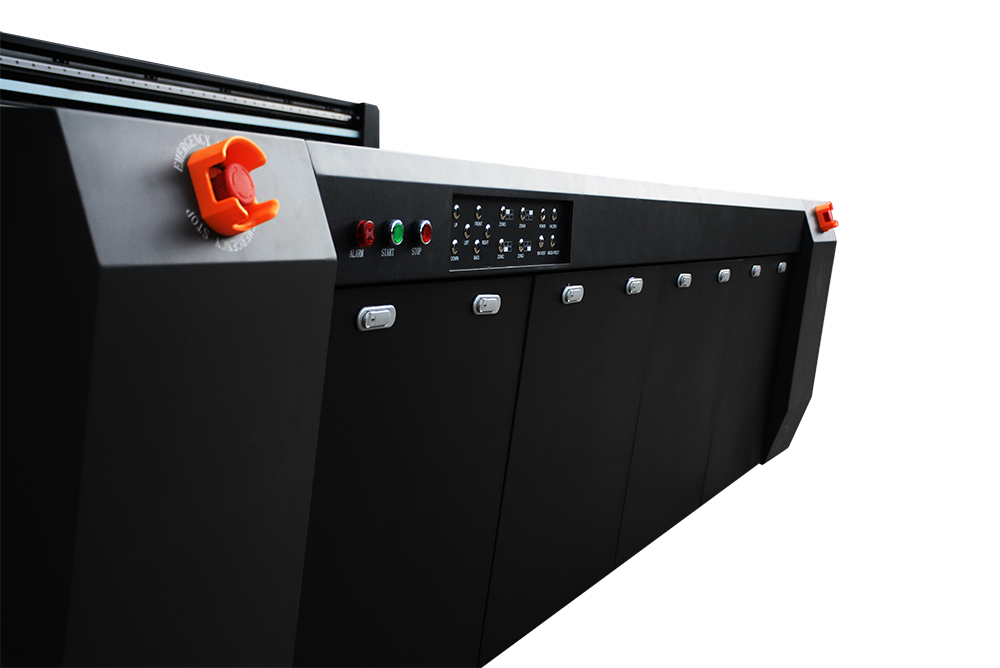How to Maintain Your UV Flatbed Printer for Optimal Performance?
How to Maintain Your UV Flatbed Printer for Optimal Performance?
UV flatbed printers have revolutionized the printing industry, offering high-quality prints on various materials with exceptional durability. These printers use ultraviolet (UV) light to cure ink instantly, resulting in vibrant, scratch-resistant, and water-resistant prints. However, to ensure optimal performance and longevity of your UV flatbed printer, regular maintenance is crucial. This article will guide you through the essential steps to maintain your UV flatbed printer for peak performance.

1. Understanding the Basics of UV Flatbed Printer Maintenance
Before diving into the specifics, it’s important to understand why regular maintenance is vital for UV flatbed printers. These machines are complex, with intricate components that require precise calibration and cleaning to function efficiently. Regular maintenance not only extends the printer’s lifespan but also ensures consistent print quality, minimizes downtime, and reduces the risk of costly repairs.
2. Daily Maintenance Routine
A daily maintenance routine is essential to keep your printer running smoothly. Here are some key tasks to perform daily:
Clean the Print Bed: Remove any debris or residue from the print bed using a soft, lint-free cloth or a vacuum cleaner. This prevents dust and dirt from interfering with the print quality.
Inspect the Print Head: Check the print head for any signs of damage or ink buildup. Use a cleaning solution recommended by the manufacturer to gently clean the print head if necessary.
Check Ink Levels: Ensure that all ink tanks are adequately filled to avoid interruptions during printing sessions.
Perform a Nozzle Check: Run a nozzle check to ensure that all nozzles are functioning correctly and not clogged. This test print will help identify any potential issues before they affect print quality.
3. Weekly Maintenance Tasks
In addition to daily maintenance, there are tasks that should be performed weekly to keep your UV flatbed printer in top condition:
Clean the Ink System: Depending on your printer’s model, you may need to clean the ink lines and filters to prevent ink buildup and ensure smooth ink flow.
Inspect the UV Lamps: Check the UV lamps for any signs of wear or damage. UV lamps are crucial for curing the ink, and their effectiveness can decrease over time. Replace them as recommended by the manufacturer to maintain print quality.
Lubricate Moving Parts: Apply lubrication to the printer’s moving parts, such as rollers and bearings, to reduce friction and wear.
4. Monthly Maintenance Routine
Monthly maintenance involves more thorough inspections and cleaning to keep your printer operating at its best:
Deep Clean the Print Bed: Use a mild cleaning solution and a soft brush to thoroughly clean the print bed, removing any stubborn residue or buildup.
Calibrate the Printer: Follow the manufacturer’s instructions to calibrate your printer. This ensures that the print head moves accurately across the print bed, resulting in precise prints.
Inspect the Belts and Cables: Check the printer’s belts and cables for any signs of wear or damage. Replace them if necessary to avoid unexpected breakdowns.
5. Seasonal Maintenance Considerations
Seasonal changes can impact your printer’s performance. Here are some additional maintenance tasks to consider:
Temperature and Humidity Control: Ensure that the printer is operated within the recommended temperature and humidity range. Extreme temperatures or humidity can affect print quality and printer components.
Dust and Debris Prevention: Regularly clean the printer’s exterior and surrounding area to prevent dust and debris from accumulating. This helps maintain the printer’s internal components and ensures better airflow.
6. Software and Firmware Updates
Just as hardware maintenance is crucial, keeping your printer’s software and firmware up to date is equally important. Manufacturers often release updates to improve printer performance, fix bugs, and enhance compatibility with new materials. Regularly check for updates and follow the manufacturer’s instructions to install them.
7. Professional Maintenance and Support
While regular maintenance can be performed by the printer operator, some tasks require professional expertise. Consider scheduling annual professional maintenance with a certified technician. They can perform more complex tasks, such as:
Thorough cleaning and inspection of internal components
Alignment and calibration of critical systems
Replacement of worn or aging parts
Additionally, having a reliable support network, such as the printer manufacturer or a trusted service provider, can be invaluable in case of unexpected issues or breakdowns.
8. Best Practices for Long-Term Maintenance
To ensure the longevity of your UV flatbed printer, adopt the following best practices:
Train Your Operators: Ensure that all operators are trained on proper printer usage and maintenance procedures. This minimizes the risk of accidental damage or misuse.
Use Quality Materials: Always use inks and substrates recommended by the printer manufacturer. Quality materials not only produce better prints but also help maintain the printer’s components.
Monitor Printer Usage: Keep track of printer usage, including print hours and ink consumption. This helps you plan maintenance tasks and anticipate potential issues.
Implement a Maintenance Schedule: Create a maintenance schedule and stick to it. Regular, scheduled maintenance is more effective than sporadic, reactive maintenance.
Conclusion
Maintaining your UV flatbed printer for optimal performance is a continuous process that requires attention to detail and a commitment to regular maintenance. By following the steps outlined in this article, you can ensure that your printer remains in top condition, producing high-quality prints consistently. Remember, a well-maintained printer is an investment in your business’s success, allowing you to deliver exceptional prints to your customers while minimizing downtime and costs.
